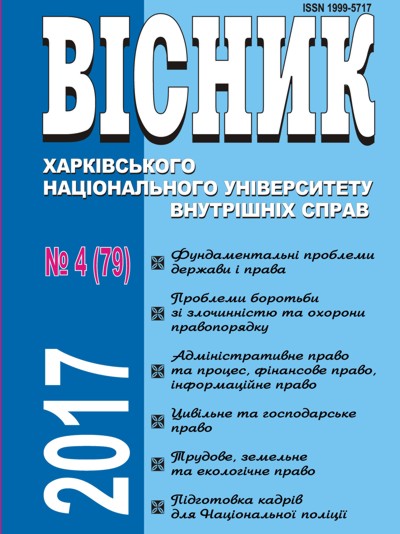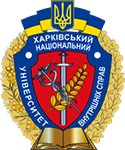Features of land relations in the Crimean Khanate (1449–1783)
Keywords:
Crimean Khanate, land possession, moslem sacred law, medieval Turkish principality, jemaat, endowmentAbstract
The basic forms of land possession in the Crimean Khanate during the XV–XVIII centuries have been considered and their specific features have been determined. It has been noted that the Khan lands were the largest form of state land possession. A special form of land possession was “kalhalyk” – it is a parcel of land that was owned by the heirs of the khans. The form of land possession, where the state law inferior to the private, patrimonial one, were medieval Turkish principalities – the possession of each of the six leading tataric generations. Another form of land possession, which combined elements of both state and private property rights, was hodzhalyk – a special area under the control of Khidrs – spiritual mentors. Murzinske was one of the most common forms of private land possession in the Crimean Khanate. It arose as a result of a pledge for the service of lands that were previously part of the Khan’s domain.
Peasant land possession consisted, first of all, of isolated land plots within the Khan, Bei, Murzin land holdings, which were considered to be the property of certain peasants, and secondly, land allotments considered as property of the entire community. It was the lands of the second group that consisted of the so-called jemaat. Analysis of the content of the Khan’s labels and court decisions of the XVI–VIII centuries indicates that jemaat was a full-fledged socio-economic unit in the Khanate.
A special form of land possession in the Crimean Khanate was the endowment – the land plots belonging to the clergy. This type of land possession arose under the influence of religious norms of Islam regarding the dedication of the land to Allah, it could not be alienated. The endowment could not be also presented, sold or confiscated.
It has been argued that land relations on the territory of the peninsula were characterized by a gradual complication, which was accompanied by an increase in the value of land holdings, the transfer of a part of the land fund to private ownership and a significant influence of the religious norms of moslem sacred law on the state of land relations in the Crimean Khanate.
Downloads
References
Блюменфельд Г. Крымско-татарское землевладение (историко-юридический очерк). Одесса : Тип. «Одесского Вестника», 1888. 112 с.
Лашков Ф. Исторический очерк крымско-татарского землевладения. Известия Таврической учёной археографической комиссии. 1895. № 22. С. 35–81.
Лашков Ф. Исторический очерк крымско-татарского землевладения. Известия Таврической учёной археографической комиссии. 1895. № 23. С. 71–117.
Лашков Ф. Сельская община в Крымском ханстве. Симферополь : Таврическая губернская тип., 1887. 64 с.
Секиринский С. Аграрные отношения в Крыму в период позднего феодализма. Симферополь : СГУ, 1984. 131 с.
Абдуллаева Г. Золотая эпоха Крымского ханства: очерки. Симферополь : Крымучпедгиз, 2012. 216 с.
Івангородський К. Землеробська культура Кримського ханства у XV–XVII ст. Чорноморський літопис. 2012. Вип. 5. С. 16–22.
Смирнов В. Крымское ханство под верховенством Оттоманской Порты до начала XVIII в. : в 2 т. М. : Рубежи ХХІ, 2005. Т. 1. Крымское ханство под верховенством Оттоманской Порты до присоединения его к России. 314 с.
Секиринский С. Аграрный строй крымских татар в XVI–XVIII вв. Материалы по археологии, истории и этнографии Таврии. 1991. Вып. 2. С. 39–46.
Халилова Д. Документы ХIХ в. о вакуфах из собрания Госархива АРК как источник по истории землепользования и мусульманского права в Крыму // Исторический опыт межнационального и межконфессионального согласия в Крыму : сб. науч. трудов / под ред. И. Ф. Кураса. Симферополь, 1999. С. 17–22.




